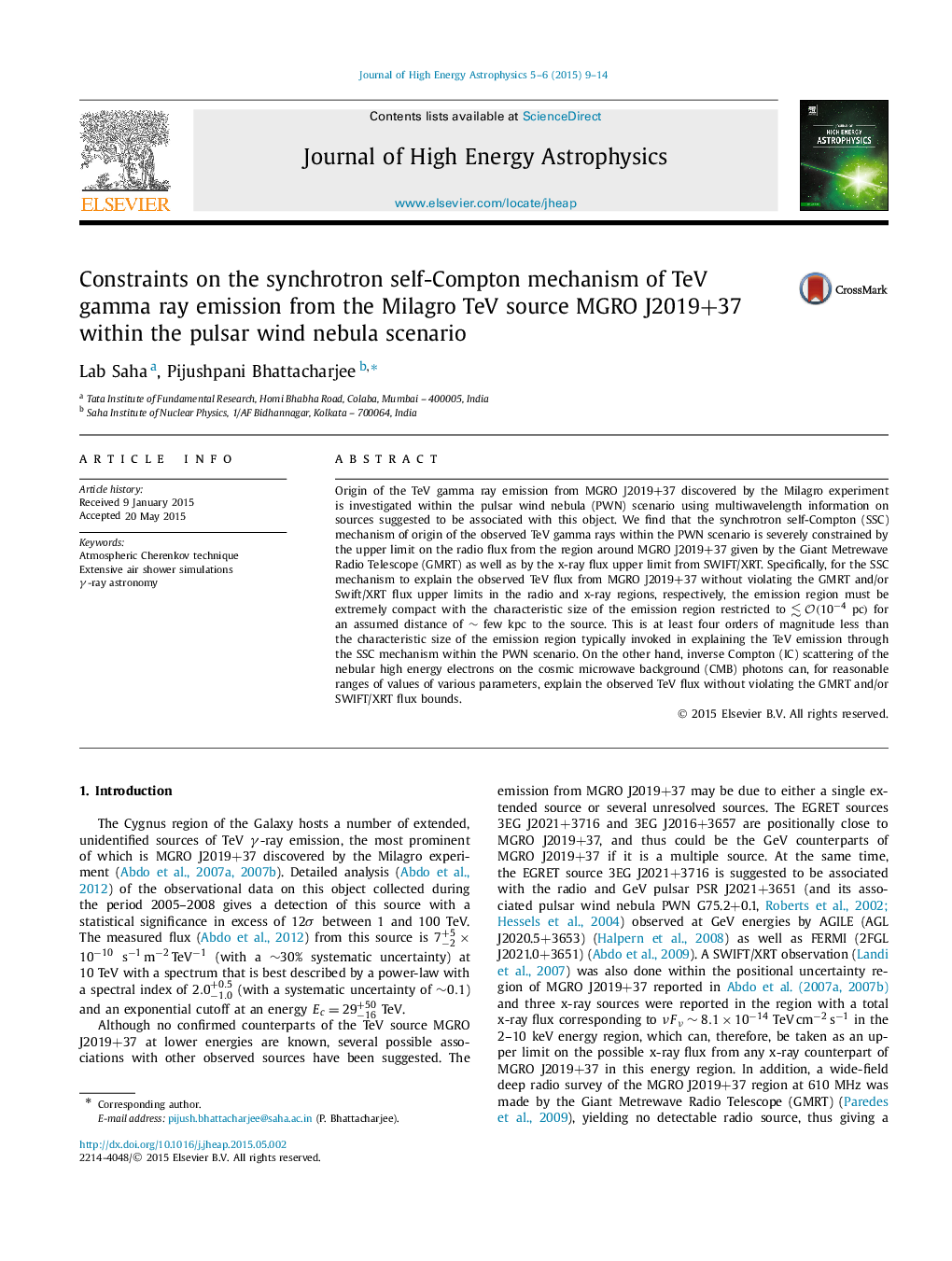| Article ID | Journal | Published Year | Pages | File Type |
|---|---|---|---|---|
| 1778653 | Journal of High Energy Astrophysics | 2015 | 6 Pages |
Origin of the TeV gamma ray emission from MGRO J2019+37 discovered by the Milagro experiment is investigated within the pulsar wind nebula (PWN) scenario using multiwavelength information on sources suggested to be associated with this object. We find that the synchrotron self-Compton (SSC) mechanism of origin of the observed TeV gamma rays within the PWN scenario is severely constrained by the upper limit on the radio flux from the region around MGRO J2019+37 given by the Giant Metrewave Radio Telescope (GMRT) as well as by the x-ray flux upper limit from SWIFT/XRT. Specifically, for the SSC mechanism to explain the observed TeV flux from MGRO J2019+37 without violating the GMRT and/or Swift/XRT flux upper limits in the radio and x-ray regions, respectively, the emission region must be extremely compact with the characteristic size of the emission region restricted to ≲O(10−4 pc)≲O(10−4 pc) for an assumed distance of ∼ few kpc to the source. This is at least four orders of magnitude less than the characteristic size of the emission region typically invoked in explaining the TeV emission through the SSC mechanism within the PWN scenario. On the other hand, inverse Compton (IC) scattering of the nebular high energy electrons on the cosmic microwave background (CMB) photons can, for reasonable ranges of values of various parameters, explain the observed TeV flux without violating the GMRT and/or SWIFT/XRT flux bounds.
